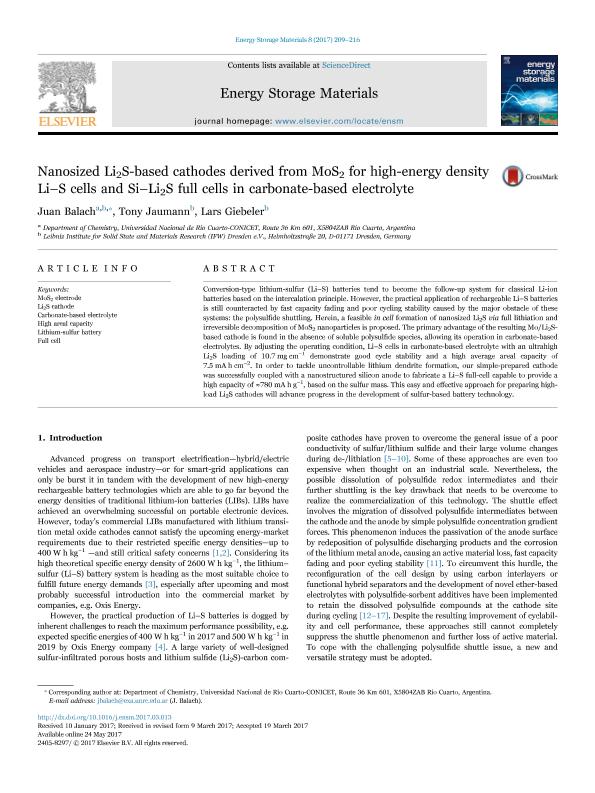Artículo
Nanosized Li2S-based cathodes derived from MoS2 for high-energy density Li–S cells and Si–Li2S full cells in carbonate-based electrolyte
Fecha de publicación:
07/2017
Editorial:
Elsevier
Revista:
Energy Storage Materials
ISSN:
2405-8297
Idioma:
Inglés
Tipo de recurso:
Artículo publicado
Clasificación temática:
Resumen
Conversion-type lithium-sulfur (Li–S) batteries tend to become the follow-up system for classical Li-ion batteries based on the intercalation principle. However, the practical application of rechargeable Li–S batteries is still counteracted by fast capacity fading and poor cycling stability caused by the major obstacle of these systems: the polysulfide shuttling. Herein, a feasible in cell formation of nanosized Li2S via full lithiation and irreversible decomposition of MoS2 nanoparticles is proposed. The primary advantage of the resulting Mo/Li2S-based cathode is found in the absence of soluble polysulfide species, allowing its operation in carbonate-based electrolytes. By adjusting the operating condition, Li–S cells in carbonate-based electrolyte with an ultrahigh Li2S loading of 10.7 mg cm–1 demonstrate good cycle stability and a high average areal capacity of 7.5 mA h cm–2. In order to tackle uncontrollable lithium dendrite formation, our simple-prepared cathode was successfully coupled with a nanostructured silicon anode to fabricate a Li–S full-cell capable to provide a high capacity of ≈780 mA h g–1, based on the sulfur mass. This easy and effective approach for preparing high-load Li2S cathodes will advance progress in the development of sulfur-based battery technology.
Archivos asociados
Licencia
Identificadores
Colecciones
Articulos(CCT - CORDOBA)
Articulos de CTRO.CIENTIFICO TECNOL.CONICET - CORDOBA
Articulos de CTRO.CIENTIFICO TECNOL.CONICET - CORDOBA
Citación
Balach, Juan Manuel; Jaumann, Tony; Giebeler, Lars; Nanosized Li2S-based cathodes derived from MoS2 for high-energy density Li–S cells and Si–Li2S full cells in carbonate-based electrolyte; Elsevier; Energy Storage Materials; 8; 7-2017; 209-216
Compartir
Altmétricas




